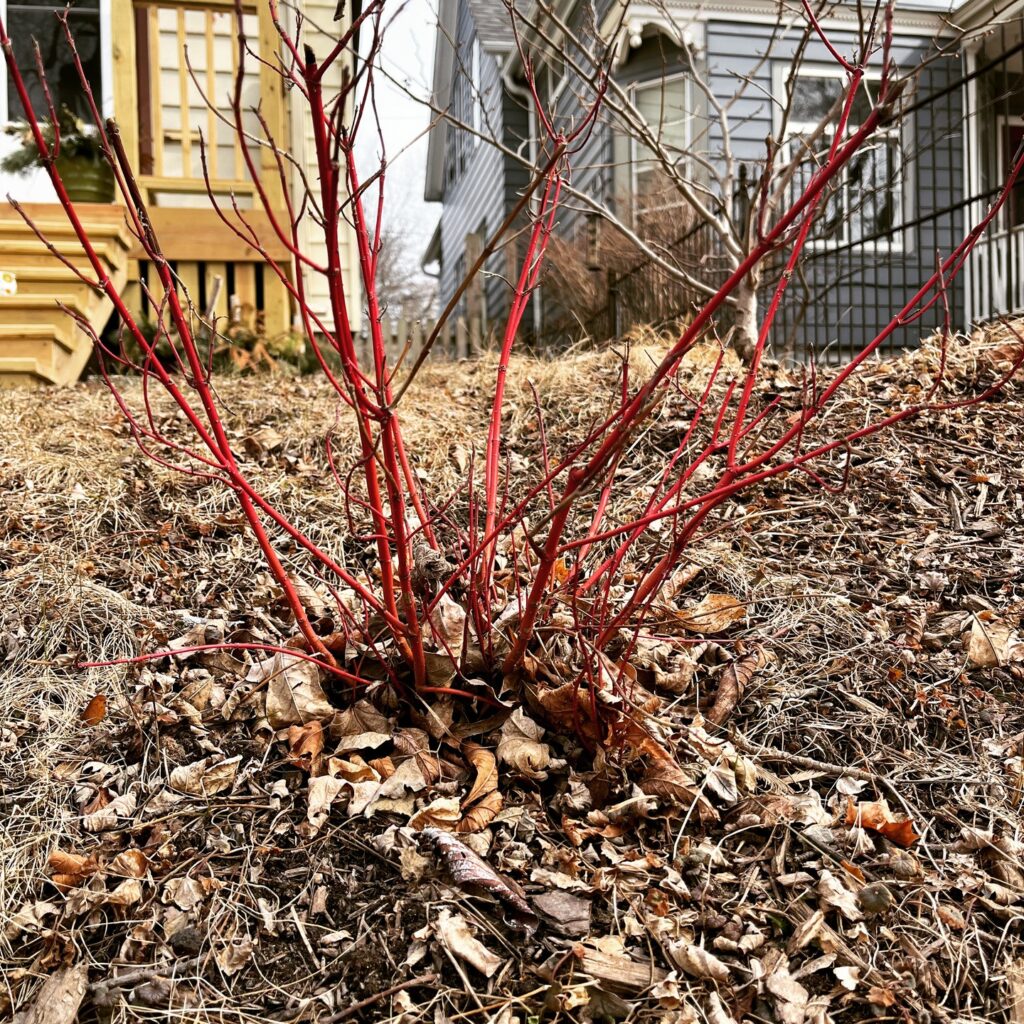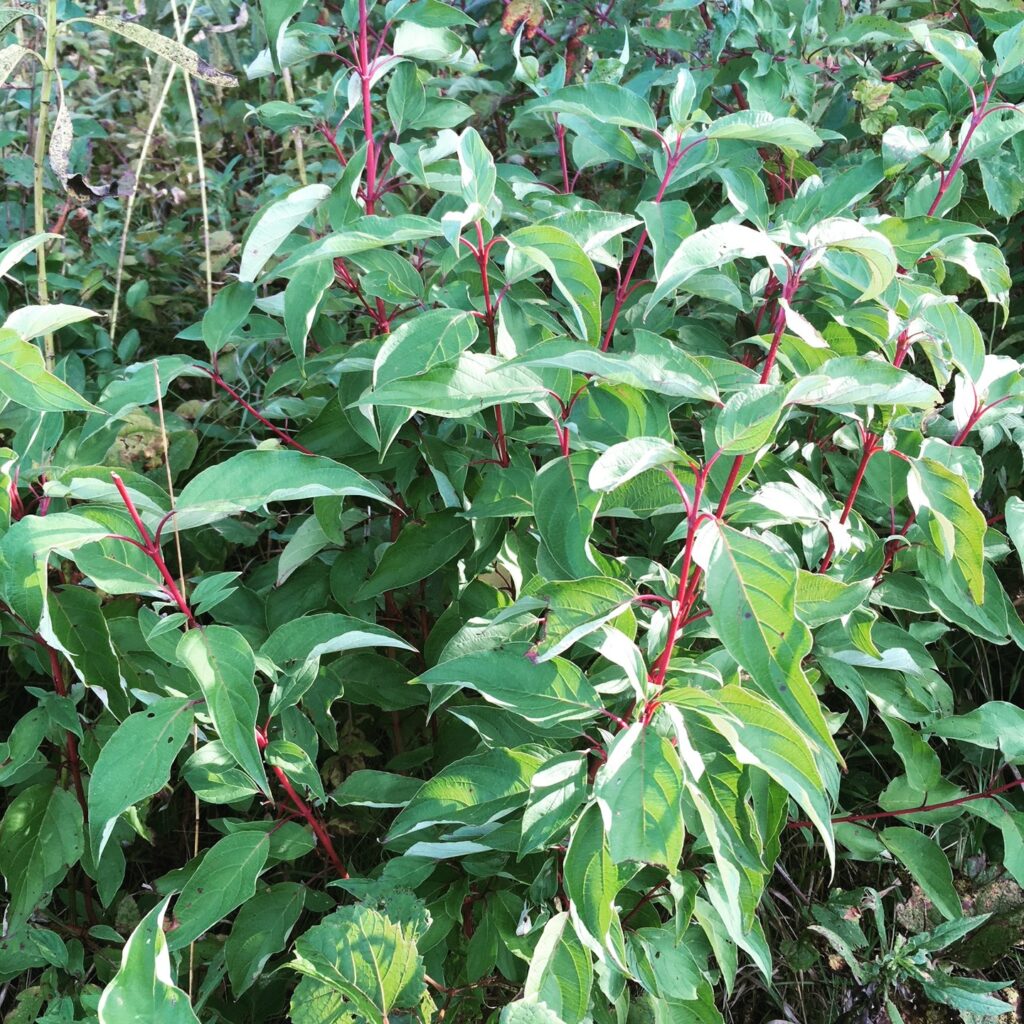
![]() It’s Meet the Plants Monday again!!
It’s Meet the Plants Monday again!!![]()
This week’s plant is a shrub that you’ve likely seen, especially in winter – Cornus sericea, AKA Red Twig or Red Osier Dogwood. Known best for its bright red canes that are great for winter interest, this Dogwood also has small white flowers in spring, interesting (non-edible) whitish-blue berries in summer for the birds, and pretty maroon to purple fall color. This plant is also a Wisconsin native – look for it near prairies and along woodland edges.
Red Twig Dogwood can be sited in a variety of conditions and is very adaptable. The twigs are most red when placed in a full-sun area, but it will do just fine in part shade and even shady conditions – though you may have more issues with cosmetic diseases like leaf spot in that case. It’s not too fussy about soil, but actually prefers wetter conditions and can be a great solution for a soggy area or rain garden. Keep it well-mulched, regardless.

This shrub can quickly get quite large, approximately 8’x8′ and will sucker and spread if given the space, which works well in a more naturalized planting. The size is also desirable for use as a screening plant or as part of a large shrub border. If you’re working with a smaller space, however, it’s easy to prune back. You can even cut it down to about 6-8″ or so every few years to rejuvenate it. Otherwise, maintenance simply requires removing the oldest 1/3 of the canes each year.
![]() I recommend Red Twig Dogwood because of its year-round interest, ecological value, and adaptability. There are also many cultivars and varieties of this plant available – including those with yellow stems and those bred for smaller size or increased disease resistance. In particular, the ‘Arctic Fire’ cultivar is a good bet for a small landscape, getting just 3-4′ tall.
I recommend Red Twig Dogwood because of its year-round interest, ecological value, and adaptability. There are also many cultivars and varieties of this plant available – including those with yellow stems and those bred for smaller size or increased disease resistance. In particular, the ‘Arctic Fire’ cultivar is a good bet for a small landscape, getting just 3-4′ tall.
![]() One similar plant that I do not recommend is Ivory Halo Dogwood (Cornus alba ‘Bailhalo’). This variegated version with white and green leaves is not the same species, and I have rarely seen one looking great in late summer due to the amount of leaf disease they seem to get.
One similar plant that I do not recommend is Ivory Halo Dogwood (Cornus alba ‘Bailhalo’). This variegated version with white and green leaves is not the same species, and I have rarely seen one looking great in late summer due to the amount of leaf disease they seem to get.

